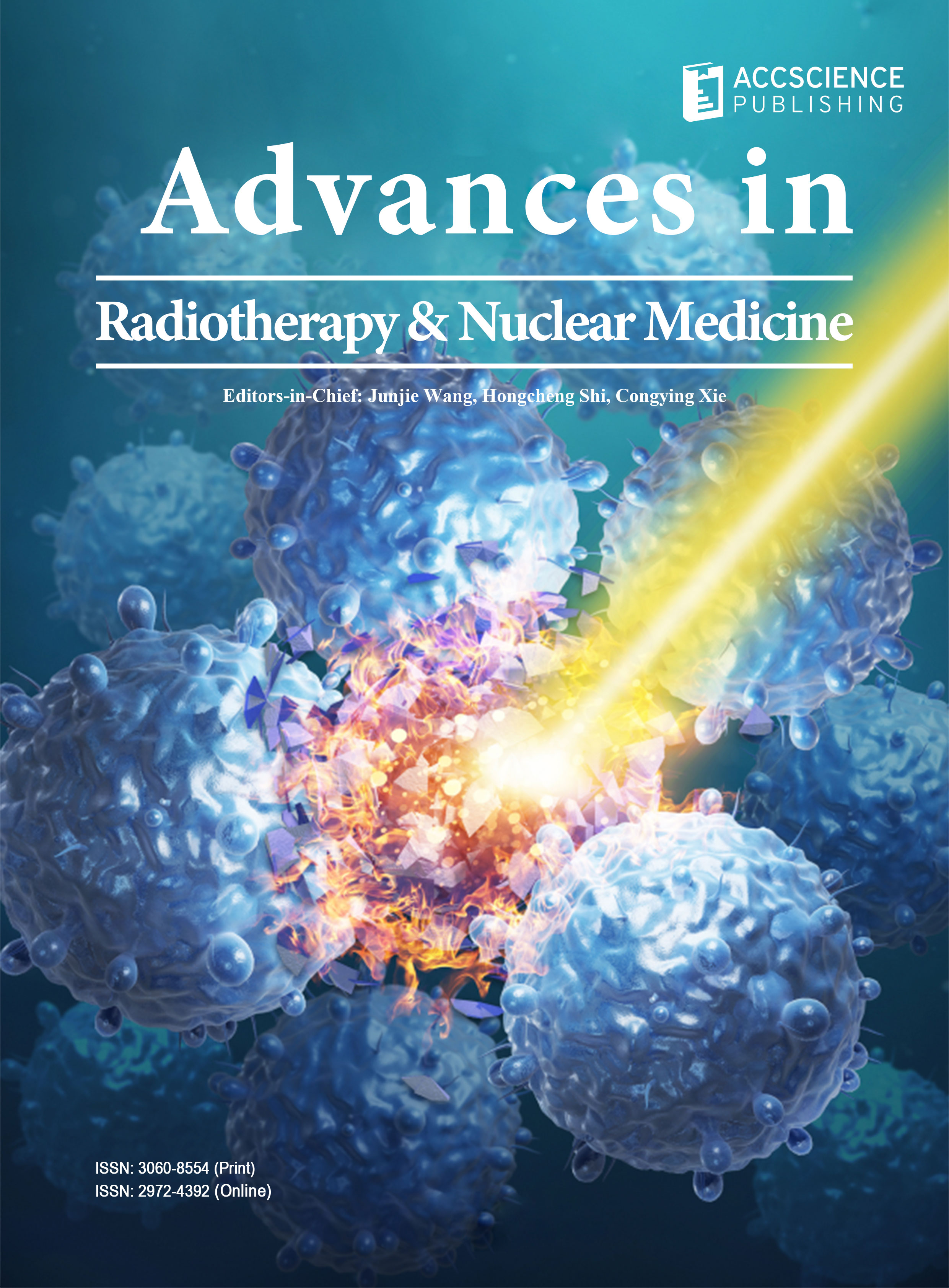Renal function reconstruction and modeling in dynamic scintigraphy

Dynamic renal scintigraphy is a key imaging technique for assessing renal function using time-activity curves (TACs), which represent radiotracer uptake and clearance. TAC accuracy depends on the region of interest (ROI) selection and the modeling approach used. This study aims to: (i) Reconstruct TACs manually using gray-level values in scintigraphic images and compare them to machine-generated TACs using key kinetic parameters (Tmax, T1/2, and the 30-min min/max ratio); and (ii) evaluate the effectiveness of a one-compartment empirical mathematical model for TAC fitting and its physiological relevance. Twelve clinical cases were analyzed, with TACs reconstructed manually using a rectangular ROI selection method and compared to those automatically generated by the scintigraphy machine. An empirical mathematical fitting function was developed to improve TAC fitting. Manually reconstructed TACs showed better dynamic behavior and physiological accuracy over machine-generated TACs, particularly due to differences in ROI selection and signal processing. Using gray-level values instead of raw radioactive counts enhanced the depiction of kidney dynamics. The proposed mathematical model demonstrated a strong correlation (R2 close to 1) and low error metrics, confirming its suitability for renal function assessment. While a free-hand ROI selection may improve accuracy, the rectangular method gives valuable results for the considered cases. This study highlights the importance of ROI selection in TAC reconstruction and demonstrates how manual methods and mathematical modeling can enhance renal functional assessment in clinical practice. Future work should validate these findings in larger datasets and assess the reproducibility of the proposed approach across different patient populations and imaging systems.
- Alsabea H. Type of renal scintigraphy. J Nucl Med Radiat Ther. 2017;8(6):347. doi: 10.4172/2155-9619.1000347
- Esser JP. Dynamic Renal Scintigraphy (Part I). Amersfoort: Meander Medical Centre; 2014.
- Tyagi N, Pandey A, Parihar A, et al. Analysis of the efficacy of elastography in comparison with dynamic renal nuclear scintigraphy in the evaluation of unilateral pelvie-ureteric junction obstruction. J Pediatr Surg. 2024;59:605-609. doi: 10.1016/j.jpedsurg.2023.11.017
- Volkan-Salanci B, Erbas B. Diuretic renal scintigraphy in adults: Practical aspects and reporting. Semin Nucl Med. 2021;52:445-452. doi: 10.1053/j.semnuclmed.2021.12.006
- Nilsson JN, Elovsson R, Thor D, Calissendorff J, Ardenfors O. Radioiodine treatment outcome by dosimetric parameters and renal function in hyperthyroidism. Thyroid Res. 2022;15:8. doi: 10.1186/s13044-022-00126-4
- François H, Richardson A, Boubaker A, et al. Dynamic Renal Imaging in Obstructive Renal Pathology a Technologist’s Guide. Austria: European Association Nuclear Medicine; 2009. p. 1-23. doi: 10.52717/NAYK4703
- Grzegorz Filipczak K, Cichocki P, Kusmierek J, Plachcinska A. Kidney efficiency index - quantitative parameter of a dynamic renal scintigraphy. I. Theory and preliminary verification. Nucl Med Rev. 2020;23(2):78-83. doi: 10.5603/NMR.2020.0025
- Wu R, Huang D, Wang Z, et al. The Application of Renal Dynamic Imaging in Measuring Renal Function of En-Bloc Pediatric Kidneys Transplanted into Recipients. In: Liu C, editors. Proceedings of the 23rd Pacific Basin Nuclear Conference. Springer Proceedings in Physics. Vol. 3. Singapore: Springer; 2023. 233-245. doi: 10.1007/978-981-19-8899-8-24
- Grilo N, Schurch B. Renal Function Evaluation. In: Liao L, Madersbacher H, editors. Handbook of Neurourology. Singapore: Springer; 2023. doi: 10.1007/978-981-99-1659-7-21
- Civan C, Simsek DH, Kiran MY, et al. Comparison of 2D planar and 3D volumetric methods for estimation of split renal function by 99mTc-DMSA scintigraphy. Phys Med. 2022;95:83-88. doi: 10.1016/j.ejmp.2022.01.010
- Reichkendler MH, Berg RMG, De Nijs R, Nørgaard H, Schmidt IM, Borgwardt L. Planar scan vs. SPECT/low-dose CT for estimating split renal function by 99mTc-DMSA scintigraphy in children. Eur J Nucl Med Mol Imaging. 2020;47(3):729-733. doi: 10.1007/s00259-019-04575-2
- Orrico M, Cosma L, Ricci M, et al. Early renal function alterations in renal branches vs. Renal fenestrations - a dynamic scintigraphy based prospective study. Eur J Vasc Endovasc Surg. 2020;60(3):395-401. doi: 10.1016/j.ejvs.2020.05.023
- Taylor AT. Radionuclides in nephrourology, part 1: Radiopharmaceuticals, quality control, and quantitative indices. J Nucl Med. 2014;55(4):608-615. doi: 10.2967/jnumed.113.133447
- Kersting D, Sraieb M, Seifert R, et al. First experiences with dynamic renal [68]Ga]Ga-DOTA PET/CT: A comparison to renal scintigraphy and compartmental modelling to non-invasively estimate the glomerular filtration rate. Eur J Nucl Med Mol Imaging. 2022;49:3373-3386. doi: 10.1007/s00259-022-05781-1
- Murray AW, Barnfield MC, Waller ML, Telford T, Peters AM. Assessment of glomerular filtration rate measurement with plasma sampling: A technical review. J Nucl Med Technol. 2013;41(2):67-75. doi: 10.2967/jnmt.113.121004
- Rahimi A, Hosntalab M, Babapour Mofrad F, Amoui M, Bagci U. An automatic segmentation framework for computer-assisted renal scintigraphy procedure. Med Biol Eng Comput. 2023;61:285-295. doi: 10.1007/s11517-022-02717-7
- Aggarwal P, Gunasekaran V, Gowtham M, et al. Assessment of post-pyeloplasty renal drainage in antenatally detected hydronephrosis by 99]mTc-L, L-Ethylenedicysteine renal scintigraphy: The importance of delayed imaging. Ann Nucl Med. 2024;39:266-272. doi: 10.1007/s12149-024-01994-6
- Zheng X, Wei W, Huang Q, Song S, Huang G. Automated region of interest detection method in scintigraphic glomerular filtration rate estimation. IEEE J Biomed Health Informatics. 2019;23(2):787-794. doi: 10.1109/JBHI.2018.2845879
- Pi Y, Zhao Z, Yang P, et al. Deep regression using 99]mTc- DTPA dynamic renal imaging for automatic calculation of the glomerular filtration rate. Eur Radiol. 2023;33:34-42. doi: 10.1007/s00330-022-08970-6

